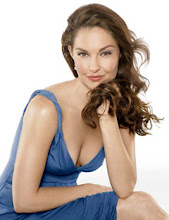
1. Alex Rodriguez, NYY $28,000,000
2. Jason Giambi, NYY $23,428,571
3. Derek Jeter, NYY $21,600,000
4. Manny Ramirez, BOS $18,929,923
5. Carlos Beltran, NYM $18,622,810
6. Ichiro Suzuki, SEA $17,102,149
7. Johan Santana, NYM $16,984,216
8. Todd Helton, COL $16,600,000
9. Torii Hunter, ANA $16,500,000
10t. Bobby Abreu, NYY $16,000,000
10t. Carlos Delgado, NYM $16,000,000
10t. Andy Pettitte, NYY $16,000,000
10t. Carlos Zambrano, CHC $16,000,000
14. Mike Hampton, ATL $15,975,185
15. Magglio Ordonez, DET $15,768,175
16. Rafael Furcal, LA $15,730,196
17. Jim Thome, CHW $15,666,667
18t. Vladimir Guerrero, ANA $15,500,000
18t. Tim Hudson, ATL $15,500,000
18t. Richie Sexson, SEA $15,500,000
21. Aramis Ramirez, CHC $15,250,000
22. Jason Schmidt, LA $15,217,401
23. Randy Johnson, ARI $15,100,546
24. Mariano Rivera, NYY $15,000,000
25. Miguel Tejada, HOU $14,811,415
26. Andruw Jones, LA $14,726,911
27t. Lance Berkman, HOU $14,500,000
27t. Barry Zito, SF $14,500,000
29. Pat Burrell, PHI $14,250,000
30t. Mark Buehrle, CHW $14,000,000
30t. J.D. Drew, BOS $14,000,000
30t. John Smoltz, ATL $14,000,000
30t. Alfonso Soriano, CHC $14,000,000
34. Albert Pujols, STL $13,870,950
35. Troy Glaus, STL $13,500,000
36. Adrian Beltre, SEA $13,400,000
37. Gary Sheffield, DET $13,326,306
38. Derrek Lee, CHC $13,250,000
39. A.J. Burnett, TOR $13,200,000
40. Jorge Posada, NYY $13,100,000
41t. Johnny Damon, NYY $13,000,000
41t. Adam Dunn, CIN $13,000,000
41t. Hideki Matsui, NYY $13,000,000
41t. David Ortiz, BOS $13,000,000
41t. Roy Oswalt, HOU $13,000,000
46. Garret Anderson, ANA $12,600,000
47. Frank Thomas, TOR $12,560,000
48t. Carlos Lee, HOU $12,500,000
48t. Mike Lowell, BOS $12,500,000
48t. Mark Teixeira, ATL $12,500,000










